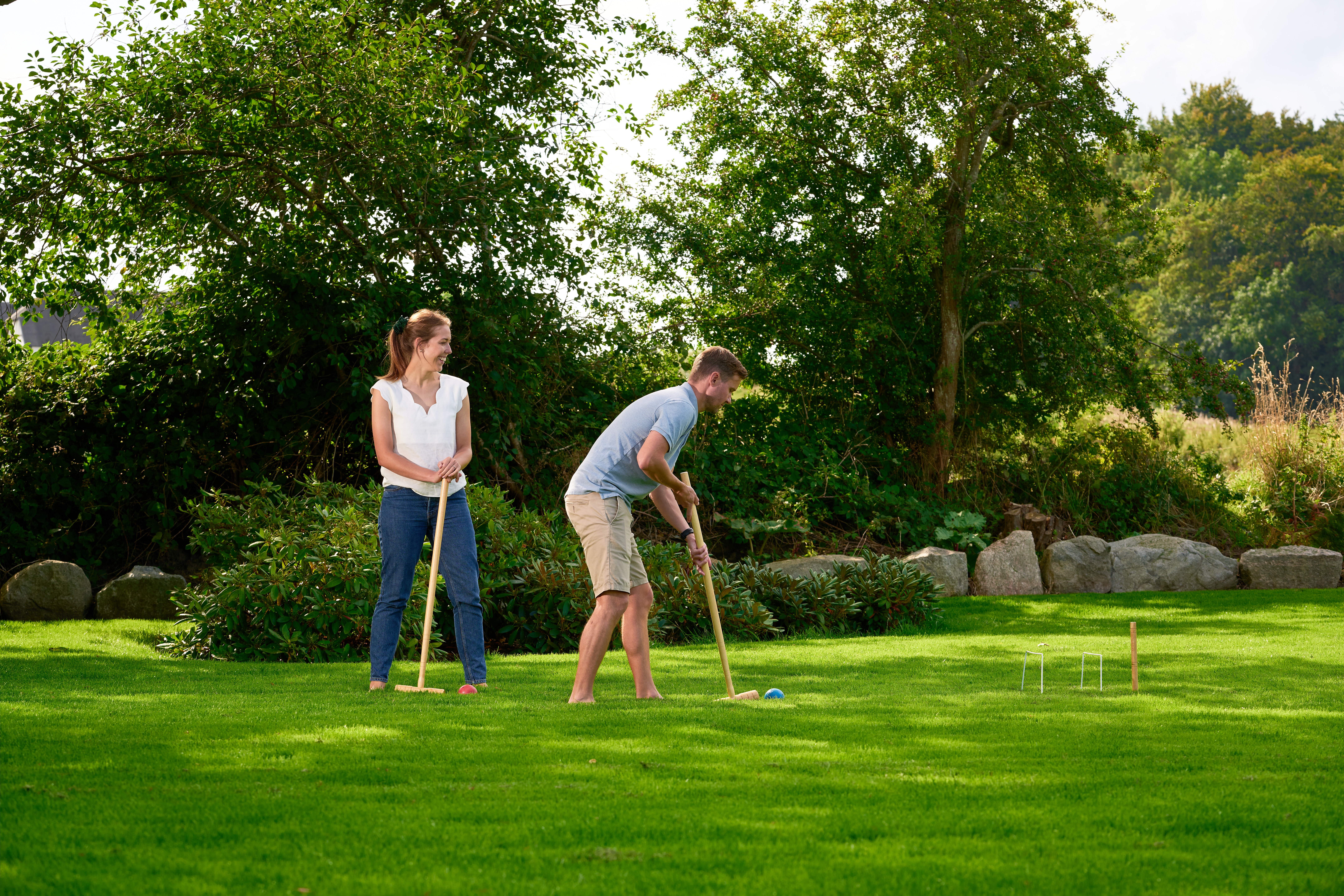Johnsons Lawn Seed debunks artificial grass autumnal myths
Autumn is the best time to prepare your real lawn for winter if you want significant results next year. Having endured the UK’s temperamental weather this summer, as well as heavier footfall over the school holidays now is the time to give it a boost. This may sound like hard work for artificial grass owners who mistakenly assume their plastic grass is maintenance-free but Johnsons Lawn Seed, the UK’s oldest and most-trusted lawn seed brand, is here to put these myths to bed and highlight why natural lawns are easier to care for in winter months.
-
Artificial grass is free draining during autumn and winter rainfall
Not quite! Plastic carpets may have some drainage holes but most are unable to absorb the volume of water that the UK has been experiencing, with showers and thunderstorms following heatwaves. During cool and rainy months, synthetic, plastic lawns and paved gardens simply cannot cope, putting pressure on drains, especially during sudden downpours.
Real grass, on the other hand, can cope with wet weather and plays a crucial role in soil stabilisation and erosion prevention during heavy rainfalls, particularly on steep slopes or embankments. Rain water is filtered through into the ground and as 80% of a grass plant is made up of roots, the turf itself can absorb plenty of water.
If a lawn has become compacted through use, this can cause problems with drainage, weeds, and moss that can be resolved in autumn by aerating. This is a simple process of perforating the soil with a garden fork to create small holes in your lawn to allow air, water, and nutrients to penetrate the grass roots, reducing the risk of standing groundwater after particularly heavy rains.
-
Extremes of weather can destroy your real grass lawn
Wrong! Lawns have a remarkable ability to shut down when the going gets tough and bounce back when temperatures cool and autumn rain falls. The chances are colder weather won't be too damaging to your grass, especially if you have done some prep in autumn before the cold snaps hit. Investing in high-quality grass seed for both the autumn and spring lawncare cycles will ensure it is at its optimum strength for anything that winter can throw at it.
Johnsons’ Super Smart Lawn Feed is an organic fertiliser that contains beneficial bacteria, seaweed extract micronutrients, and soluble mycorrhizae. It provides a rich green appearance and can increase a lawn's root system by up to 150 times. This 100% organic fertiliser, which can be used until, the end of September, revitalises lawns, promoting dense, green, and slow-growing grass for winter.
Johnsons Quick Lawn' with Accelerator is perfect for autumn lawncare, offering rapid germination and establishment with just a third of the water needed for new lawns. This product provides a strong, thick, and healthy lawn, even in cold or wet conditions, with the seed mix delivering 38% more grass within the first seven days and will germinate at lower temperatures.
On the flip side, whilst artificial grass may be able to withstand bad weather for a few seasons, it only has a limited shelf life. It will deteriorate over the years and eventually flatten like a carpet in the home would.
-
Artificial lawns are low maintenance
Wrong again! Regular maintenance is essential to keep an artificial lawn looking its best. Autumn and winter will mean regular sweeping to remove leaves, twigs, or other larger debris that may have accumulated on the surface. You will also need to wash with a mild detergent if birds or pets make a mess, and regularly clean to eliminate mud, stains or spills. Users will even have to hoover the plastic to ensure that any smaller particles or dust are thoroughly removed.
Even if your lawn is synthetic, real weeds will still creep through. If you don’t want the hassle of picking them by hand, you will need to have a weed membrane installed underneath which is an extra cost.
-
Grass does not get enough light to grow in shaded areas

Again, not true. Whilst artificial grass may seem an easy answer as it won’t be affected by a lack of light, there are shade-tolerant grasses that can be used to create a cool, natural haven from the height of summer heat.
Johnsons Shady Place is one of the company’s leading products. Ideal for creating luscious green lawns in shaded areas, under trees or next to high walls and hedges, this innovative formula features the Johnsons bestselling mix of Browntop Bent, Strong and Slender Creeping Fescue, Hard Fescue and Red Fescue; combined with the advanced Seedbooster™ coating to completely override this myth that real grass cannot be grown.
-
Artificial lawns are the ideal solution for winter
Unfortunately, not! They may provide year-round greenery but snow, ice and frost in the colder months may temporarily harden artificial grass. If you have children or pets, it’s important to be cautious in case of slips and falls. So again, regularly brushing the artificial grass will be needed and if the blades become frozen, they can break if you walk on them.
A natural Johnsons Lawn goes dormant in winter. Over the autumn and winter period, grass will stay relatively green — even when blanketed with snow. It is advised not to step on grass when it is frozen but even if you do, living natural grass lawns can repair and regenerate themselves.
Keeping real grass in the garden also provides shelter for wildlife during a cold snap. When cutting your lawn for the final time before the shorter days draw in, leave the edges or a patch long for over-wintering insects. This will also allow small mammals and amphibians to move around safely and shelter. Wildflowers like clover, buttercups, daisies, and dandelions are common in uncut grass, providing nectar for bees and seeds for birds. They support ecosystems by attracting pollinators and providing food for various bird species. Their vibrant colours and beauty add charm and interest whilst the rest of the garden winds down.

